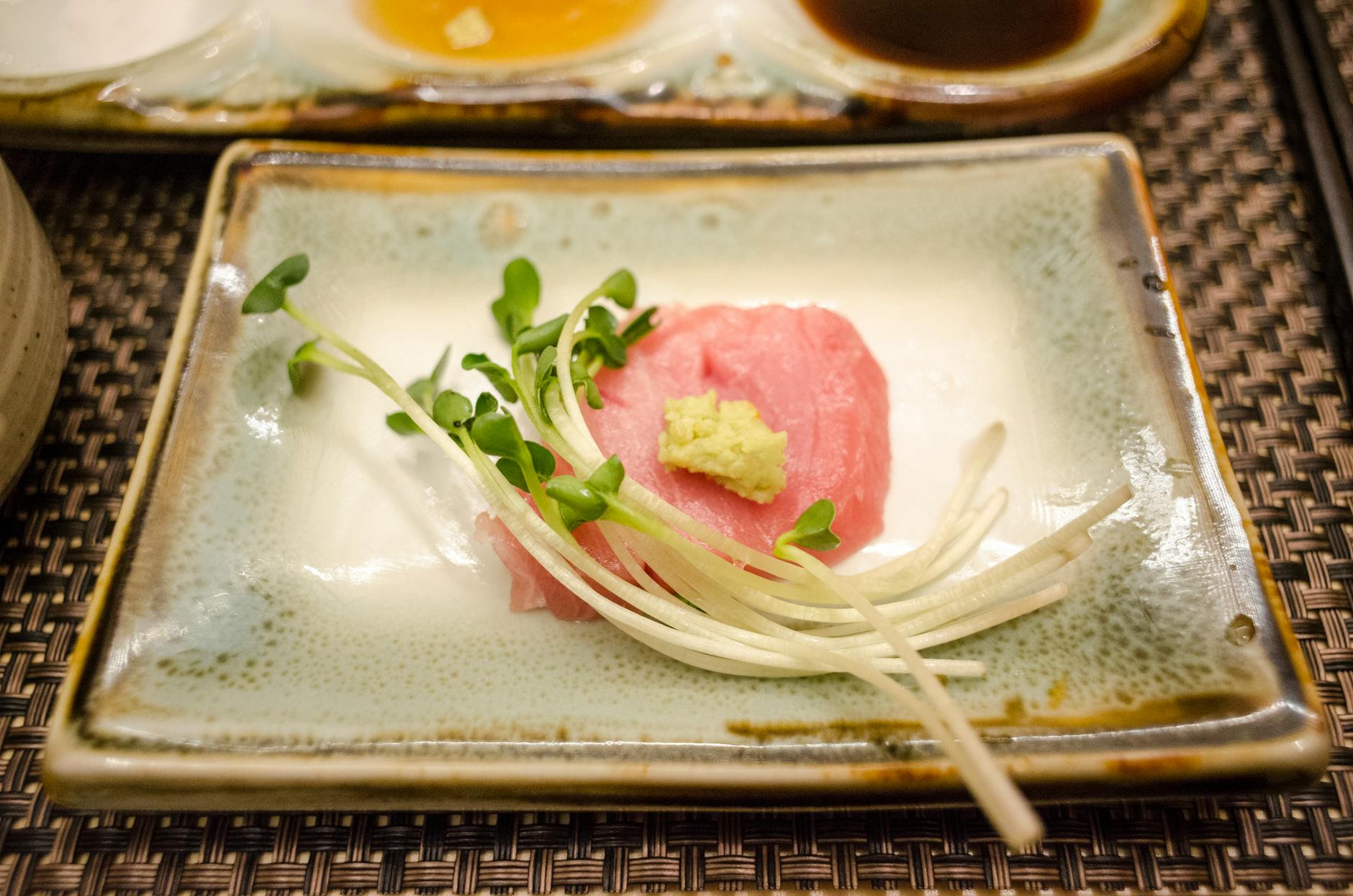While Ozempic may threaten to bankrupt the U.S. healthcare system, the recent approval of the weight loss drug by the Japanese medical authorities will not be the same money-maker for Novo Nordisk. While 42% of American are obese, only 4.5% are obese in Japan.
What is so different about Japan? Is it genetics? Is it their food culture?
For many, food is cultural and comfort; however, eating habits are also learned. In the U.S., sauces to dip and cover foods are popular. Salads are covered with dressings to add flavor and oil. In Japan, the culture of cooking is to enhance the natural flavor of the food rather than cover it. The traditional Japanese cuisine is simpler and not loaded with processed fats, oils, sugars, and carbs.
The Japanese government has also been educating young minds and encouraging healthy lifestyles. In the U.S., we currently teach the food pyramid in schools. However, I still remember learning the four food groups several decades ago in elementary school: meat, dairy, vegetables, grains. A balanced meal has all four food groups. I find it disturbing that one of the main influences on this campaign is the lobbying by industry and marketing. Why would dairy be a food group?
On another note, it is also a little disturbing the approach of government in Japan. The “Metab Law” requires Japanese companies to measure waist lines once a year. Those with increased waist lines are referred to health resources. Based on the measurements, companies with obese employees can face fines.
How can we manage the epidemic of obesity in the United States?
The health risks with obesity are real. Health programs once targeted cigarette smoking as a major health risk. That campaign has been successful. Smoking in airplanes, restaurants, and workplaces used to be common place. With the help of legislation to protect us against second-hand smoke, we have recognized smoke-free zones. While no one wants to be told what to do, we all pay the burden of healthcare costs of emphysema, lung cancer, and heart disease that are prevalent with cigarette smoking. The country loses contributing members of society to illness and disease. Slowly the culture of cigarette smoking has changed in this country.
As the science of health and wellness continues to evolve, we will identify new risks. In the future, we may laugh at things that once seemed healthy and normal.
Decades ago, doctors would promote smoking. Today, we know that they are highly addictive and increase the risk of many diseases.
Many years ago, I went to visit my parents. I had not seen them in a few months. They had been retired for many years but still navigating retirement. We had settled down in front of the TV after dinner. My mom brought out a small glass of wine for herself and my dad.
“When did you start drinking wine?” I asked, just a little perplexed. My parents never smoked or drank alcohol, even in social situations. In fact, my dad did not even allow us to drink coffee because it was addictive. My mom replied that it had only been a few weeks, but I was still perplexed.
“Why?” I asked, “Do you like the taste?”
“No,” she said, “we just read that red wine was good for you.”
I was a little shocked by how the news and media had influenced my parents. I strongly recommended that they not continue drinking if they did not enjoy it. While studies are conflicting, today most believe that there is no health benefit to the daily use of alcohol. We need to be aware of the risks of this toxin and the burden of alcoholism on society. While there are medicinal and recreational uses of alcohol, there is also the potential for abuse and liver toxicity. There are those that use this drug moderately and enjoy the effects, but let us not hide behind the word “health benefits” and let us not fall under the spell of big business spinning a story to sell products.
Today, we know that obesity and sedentary lifestyles also make us a “sicker” society. As in the case of cigarette smoking, education programs and legislation have been some of the tools used by government to change our culture towards one that promotes health and wellness.
How can we shift as a culture towards healthy foods and healthy lifestyles?
Read the article below for more on Japanese food culture. While it doesn’t give us all the answers, it does offer us an interesting perspective.
Resources
- “The Land That Does Not Need Ozempic,” Time Magazine Article by Johann Hari
- MAGIC PILL: The Extraordinary Benefits and Disturbing Risks of the New Weight-Loss Drugs by Johann Hari
